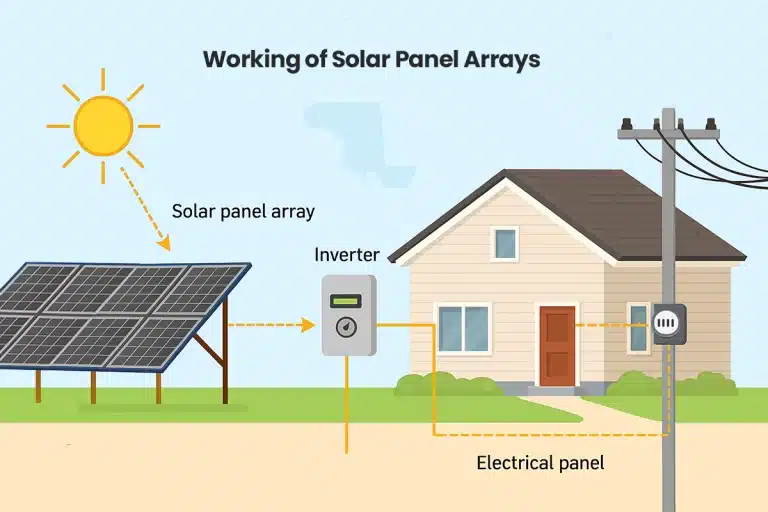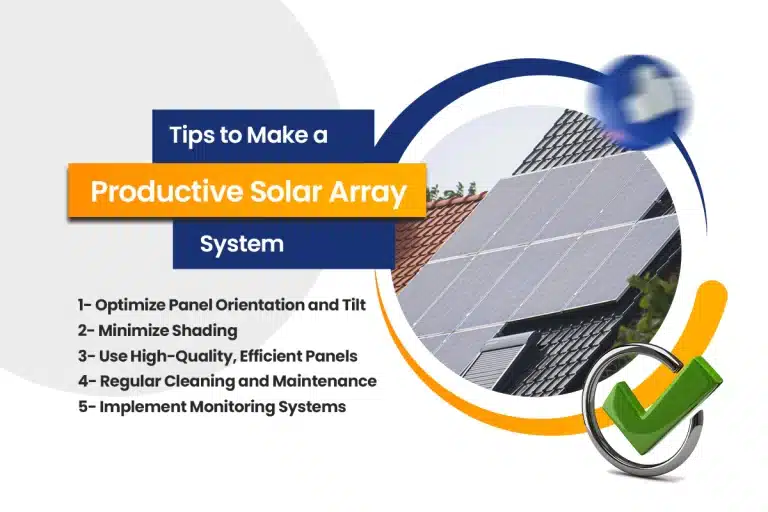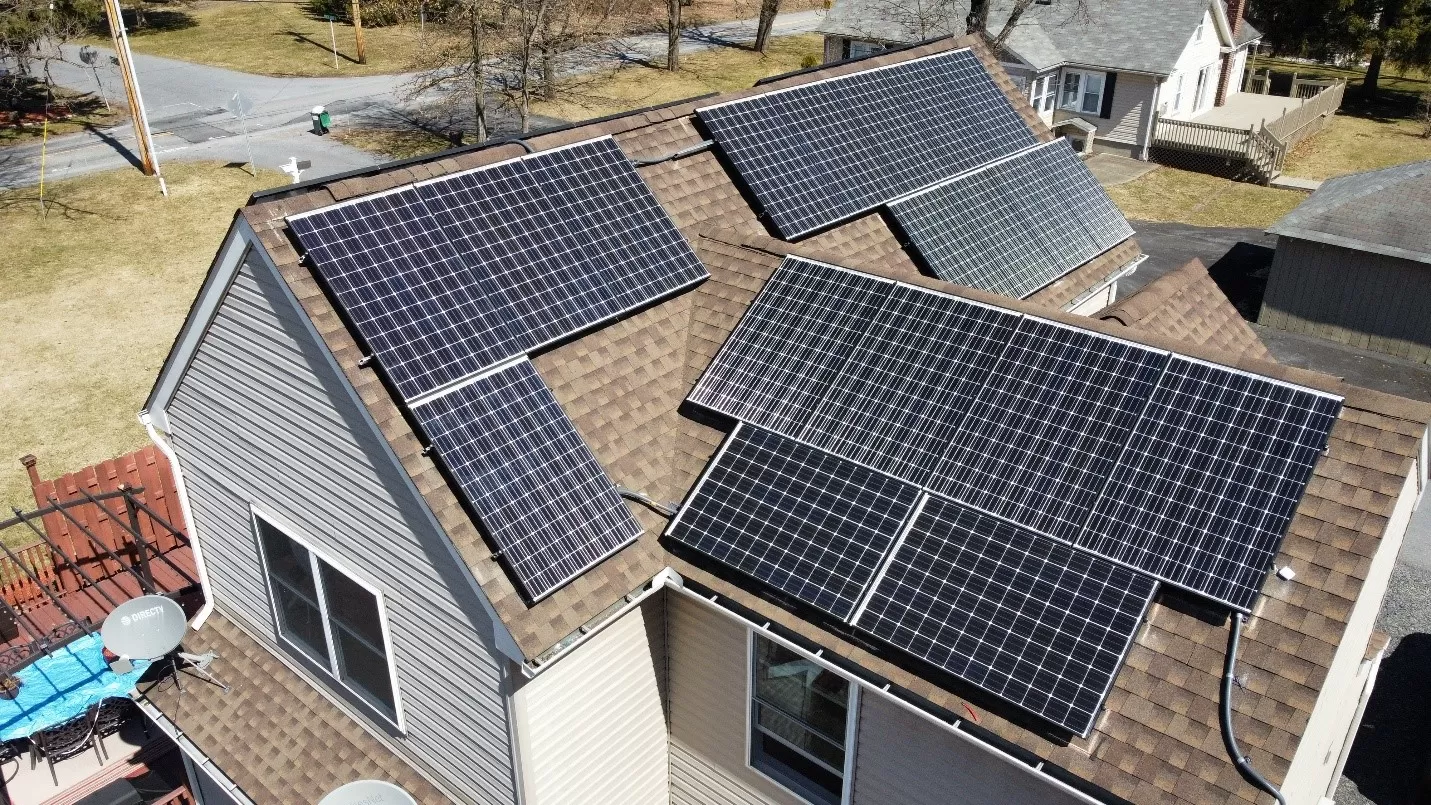- Updated On: May 29, 2025
Solar Array Installation: What to Expect and How to Maximize Efficiency?
Installing a solar energy system is a worthy investment in today’s world of energy crises, frequent power outages, and high utility rates. However, it is not as simple as just placing solar panel modules to your rooftop. It requires proper planning, designing, and permitting to install a suitable solar system that leads you to achieve your energy goals. A solar array is a vital structure, as it holds all the solar panels in a PV setup and is responsible for the output and efficiency.
Designing a solar array for home or commercial systems is the most critical phase that requires expertise to ensure maximum performance and expected savings. While designing, every detail matters, like the placement of modules, tilt angles, shading, etc. Between DIY vs. professional solar installation, one of the major reasons to consult with a certified solar installer is the solar array. If not designed as per the specifications, it may impact the PV system performance, hence lower energy production and less savings.

In this article, you will learn everything about a solar array system, including its working, the cost of a solar array for a home, and how to make productive solar panel arrays.
What is a solar array?
A solar array is made up of several solar panels connected to collect sunlight and generate power. A completely functional solar power system consists of solar arrays, one or more solar inverters, and battery storage. In a solar power system, a solar array produces electricity that you use to power your home or export to the grid to earn credits through net metering.
How do solar arrays work?
Solar arrays have a 25-year or longer warranty period during which they can generate maximum energy. They do not require fuel, moving parts, or other owner intervention for energy production. When sunlight strikes the solar cells, it activates them and produces direct current (DC) electricity. After that, the DC power is transformed into alternating current (AC) electricity that may be used in the house by an inverter.

What are the main types of solar panel arrays?
Depending on the capacity you require, the number of panels varies in a solar array:
Home Array: About 20 solar panels make up the home array. 15 solar panels of 400 W make a standard residential system, which has a capacity of roughly 6 kilowatts (6,000 watts).
Utility Solar Array: At least 2,500 solar panels of 400 W are needed for solar power plants, often known as solar farms, which have a power capacity of at least one megawatt (1 million watts).

Why does the location of solar array installation matter?
It’s essential to work with a certified solar company for system design and solar panel installation to maximize the benefits of clean power. A solar array facing straight south will generate more electricity than one facing west, east, or north if you live in the Northern Hemisphere, as it will receive more hours of sunlight. Many homeowners install solar on rooftops. Although if your roof is not good, there are other options too. Instead, you can go for a ground-mounted system if you have lots of land and sunlight. Ground-mounted arrays are not limited by roof dimensions, allowing you to face and tilt the panels in the best possible way to maximize output and gradually increase electricity generation. Installing your solar array in the right location makes a huge difference in power generation. If it is not in the right place, you may lose lots of sunlight.
How many panels do you need in your array?
A typical home requires 17-21 solar panels to fulfill energy requirements. However, if your home has unique energy requirements, you may need to install a few more or higher wattage panels. Also, the number of panels you need also depends on the location, both for your geographic region and the design itself. When estimating the production of your solar panel system, a professional solar installer considers your location and will suggest a design based on that information. Learn how to calculate the number of solar panels for your home here!
Can you install more than one solar array?
Your installer may suggest a solar panel system consisting of several interconnected arrays that feed power to a single meter in certain situations. However, it may increase the cost due to the additional work requirements.
Additionally, if you install multiple arrays facing different directions, you can consider microinverters or power optimizers as your inverter solution. By maximizing the output of each panel, these module-level power electronics, or MLPE, support complex solar panel systems in producing electricity effectively. A typical central string inverter, on the other hand, can reduce the output of the other panels on the same circuit if one panel performs inadequately.
What are the tips for designing a productive solar array?
You may increase the size of your existing home solar system in case of increasing power needs like EV charging or any other smart home upgrade. But here are some tips to maximize solar power production with solar array installation:

Solar Array Direction: Adjust the panel’s direction smartly toward the right direction for maximum sun exposure in your area.
Efficient Solar Panels: Instead of increasing the number of modules for more production, you can choose modern, efficient solar panels for cost savings. Explore the best solar panels for your home here!
Shading Loss: Make sure that your solar arrays do not face any shading, like trees, nearby buildings, etc. Also, you can invest in microinverters to minimize power loss due to shade issues.
Monitor Array’s Performance: You can observe the performance of your system by adding a monitoring system like heartbeat technology to ensure efficiency and potential issues.
Solar Maintenance: Although solar panels do not require ongoing maintenance, if you live in an area with a dusty climate or bad weather conditions like storms, snow, etc., you should consider solar panel cleaning for maximum solar output.
It is suggested to check with an expert solar installation company like Solar SME for solar array installation. We will ensure the best location, angle, and orientation of your arrays for maximum power production and savings. You can get a FREE quote for the cost estimation.
Related Articles:
In the United States, if you reside in a subdivision, planned community, or a building, you may be a part of the Homeowners Association, also known as HOA.
In the United States, rising inflation, high energy costs, extreme weather, frequent power outages, and less grid reliance are the major reasons for switching to solar.
Tesla solar shingles may seem visually appealing, but it is essential to consider the pros and cons, Tesla roof tile costs, etc., according to your energy goals. We will compare solar roofs with solar panels to help you make a smart decision for your home.



